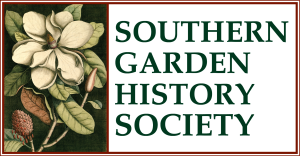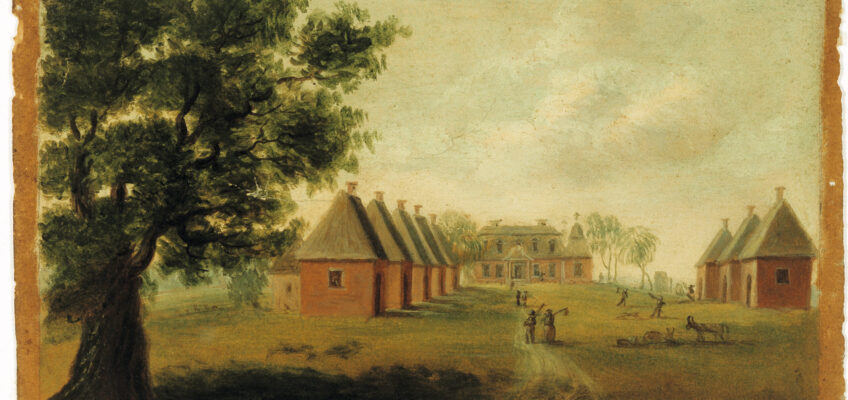Image courtesy of the Gibbes Museum of Art – View of Mulberry, House and Street, ca. 1800, By Thomas Coram (American, 1756 – 1811); Oil on paper; Museum purchase; 1968.018.0001;
Landscapes of Slavery, Landscapes of Freedom:
The African diaspora and the American built environment
Harvard Graduate School of Design
Histories of the Atlantic world have focused both on the adaptation of ideas from the Old
Continent to the new and on the material and cultural exchanges occurring throughout the
centuries. To complement this scholarship, studies have been conducted on the slave trade
between West Africa, mainland North America and the Caribbean, which formed the base of
plantation economy and helped build the fortunes of many landowners in the colonial and
antebellum period of the republic. Recent scholarship has acknowledged the violence of the
archive of white records of slavery that have silenced the voices of the enslaved, and this work
has sought to recover the experiences and vantage points of slavery’s victims.
This forum will address a more specific set of questions that have to do not only with the unique
contribution the forced labor of the African diaspora and Afro-descendants brought to the
plantation economy, but also with the potential exchange of knowledge about gardening and
cultivation practices across the Atlantic, both from West Africa and between the Caribbean and
mainland North America. On occasion the cultivation of specific staple crops such as rice
depended upon the expertise of the enslaved. More generally, many of those forced to labor on
their masters’ plantations simultaneously worked on small plots of land within their quarters,
enabling them to exercise limited agency with regard to the extent and type of crop cultivation
for their own use and consumption. When slavery legally ended, the exploitation of black labor
continued, although over time black land-ownership increased and perhaps involved different
approaches to land use than was common among white small-holders. Reconstructing these
histories and those of the environments Africans built and cultivated for others and for
themselves is challenging, as there is only a limited archival record that contains few enslaved
voices.
This conference seeks to engage with the work of archaeologists, ethnobotanists, cultural
geographers, anthropologists, and of experts in African American Studies and oral history in
order to form a more complete picture of the African contribution to the shaping of the North
American landscape.
Proposals for unpublished papers are welcome from scholars in any field. Topics might include
(but are not limited to) such subjects as:
• the relationship between place-making and slave labor in North America and its cultural,
social and economic underpinnings.
• the adaptation of imported African horticultural and agricultural knowledge in the
Caribbean and North America.
• the exchange of knowledge related to agricultural and gardening practices between the
Caribbean and the North American mainland.
• Atlantic World foodways.
• crop cultivation and food growing practices on plantation sites indebted to forced labor.
• the ways in which slavery and forced labor made intensive cultivation and production
possible.
• the place-making of former slaves in both rural and urban environments.
Abstracts of no more than 500 words are to be headed with the applicant’s name, title of the
paper, professional affiliation, and contact information. A two-page CV should also be included
in the submission. Please send proposals by March 15, 2021 to: Raffaella Fabiani Giannetto,
Graduate School of Design, Harvard University. Email: rfabiani@gsd.harvard.edu
Authors of accepted proposals will be required to submit the complete text of their papers by
June 15, and carry out potential revisions by August 30, 2021, after which the symposium chair
will circulate them among the speakers. Publication of the essays presented at the conference is
anticipated.


Leave a Reply